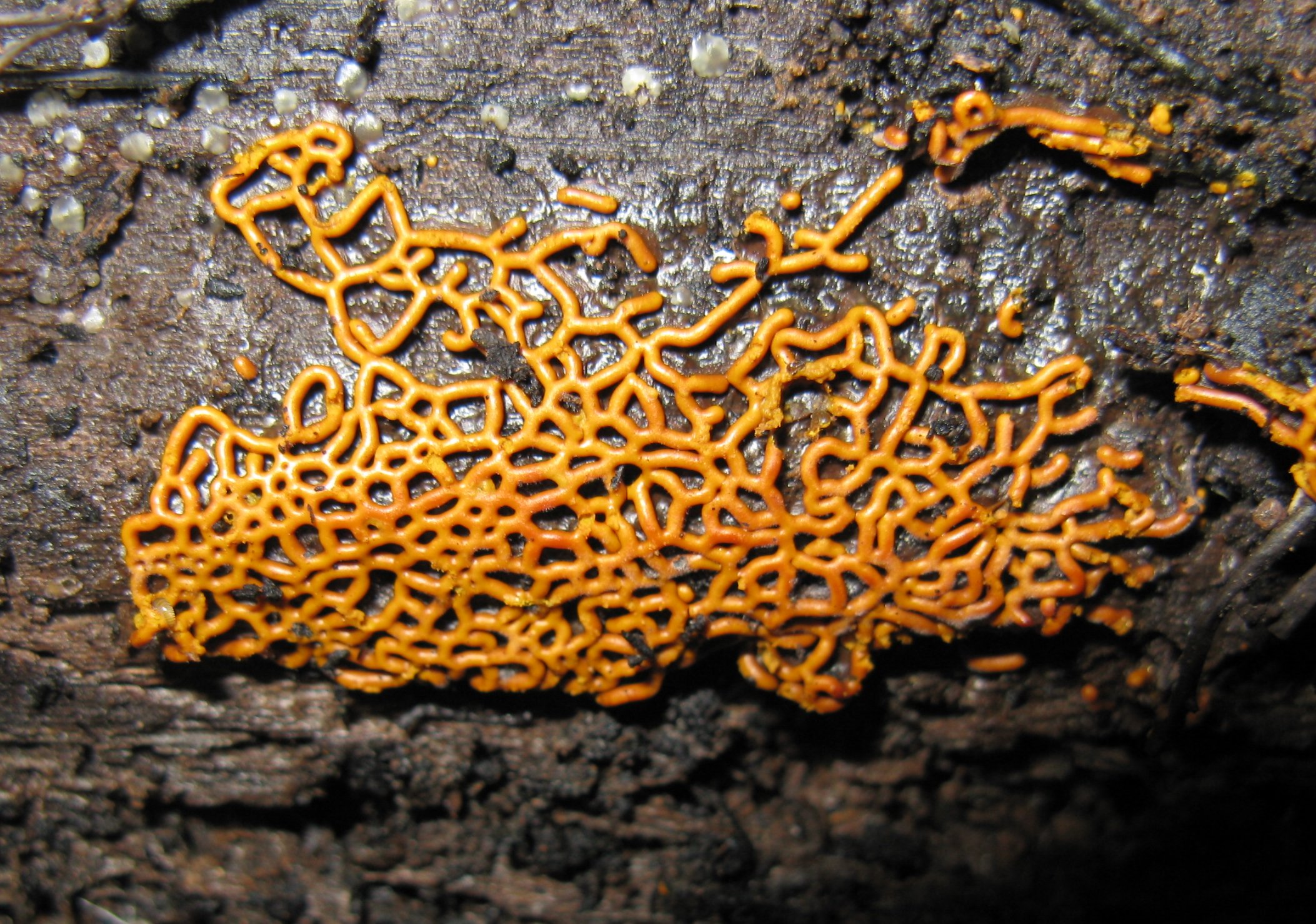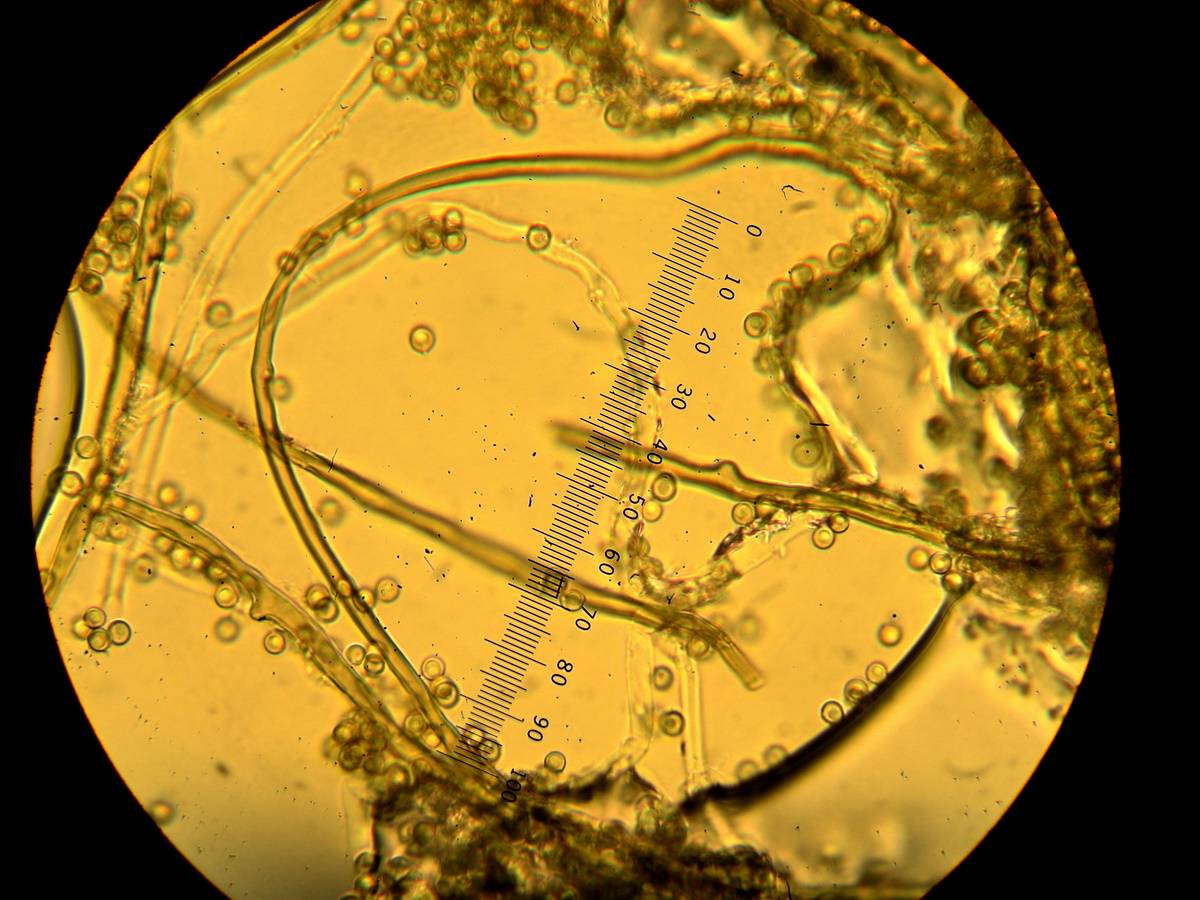|
Brefeldia Maxima
''Brefeldia maxima'' is a species of non-parasitic plasmodial slime mold, and a member of the class Myxomycetes. It is commonly known as the tapioca slime mold because of its peculiar pure white, tapioca pudding-like appearance. A common species with a worldwide distribution, particularly in North America and Europe. It is often found on bark after heavy rain or excessive watering. Their spores are produced on or in aerial sporangia and are spread by wind, however beetles of the family Lathridiidae are also reported to disperse the spores. Bonner states that soil invertebrates and rain mainly disperse spores as they are sticky and unlikely to be carried by air currents. The genus is named after German botanist and mycologist Julius Oscar Brefeld (August 19, 1839 – January 12, 1925). Distribution Found throughout the United Kingdom and common in Europe, ''Brefeldia maxima'' is known to be much rarer in North America. Description and habitat File:Brefeldia maxima - plasmodium ... [...More Info...] [...Related Items...] OR: [Wikipedia] [Google] [Baidu] |
Amoebozoa
Amoebozoa is a major taxonomic group containing about 2,400 described species of amoeboid protists, often possessing blunt, fingerlike, lobose pseudopods and tubular mitochondrial cristae. In traditional and currently no longer supported classification schemes, Amoebozoa is ranked as a phylum within either the kingdom Protista or the kingdom Protozoa. In the classification favored by the International Society of Protistologists, it is retained as an unranked " supergroup" within Eukaryota. Molecular genetic analysis supports Amoebozoa as a monophyletic clade. Modern studies of eukaryotic phylogenetic trees identify it as the sister group to Opisthokonta, another major clade which contains both fungi and animals as well as several other clades comprising some 300 species of unicellular eukaryotes. Amoebozoa and Opisthokonta are sometimes grouped together in a high-level taxon, variously named Unikonta, Amorphea or Opimoda. Amoebozoa includes many of the best-known a ... [...More Info...] [...Related Items...] OR: [Wikipedia] [Google] [Baidu] |
Plasmodial
A plasmodium is a living structure of cytoplasm that contains many nuclei, rather than being divided into individual cells each with a single nucleus. Plasmodia are best known from slime molds, but are also found in parasitic Myxosporea, and some algae such as the Chlorarachniophyta. Structure A plasmodium is an amoeboid, multinucleate, and naked mass of cytoplasm that contains many diploid nuclei. The resulting structure, a coenocyte, is created by many nuclear divisions without the process of cytokinesis, which in other organisms pulls newlydivided cells apart. In some cases, the resulting structure is a syncytium, created by the fusion of cells after division. Under suitable conditions, plasmodia differentiates and forms fruiting bodies bearing spores at their tips. Taxonomic distribution The term plasmodium, introduced by Leon Cienkowski, usually refers to the feeding stage of slime molds; these are macroscopic mycetozoans. The multinucleate developmental stages of so ... [...More Info...] [...Related Items...] OR: [Wikipedia] [Google] [Baidu] |
Macbrideola
''Macbrideola'' is a genus of Amoebozoa in the family Stemonitidaceae. As of 2015, there are 17 species in the genus. The genus name of ''Macbrideola'' is in honour of Thomas Huston Macbride (1848–1934), who was the tenth president of the University of Iowa and was a naturalist and botanist. The genus was circumscribed by Henry Clark Gilbert in ''University of Iowa Studies in Natural History'' vol.16 on page 155 in 1934. Species *''Macbrideola andina ''Macbrideola'' is a genus of Amoebozoa in the family Stemonitidaceae. As of 2015, there are 17 species in the genus. The genus name of ''Macbrideola'' is in honour of Thomas Huston Macbride (1848–1934), who was the tenth president of the Uni ...'' *'' Macbrideola argentea'' *'' Macbrideola confusa'' *'' Macbrideola cornea'' *'' Macbrideola decapillata'' *'' Macbrideola declinata'' *'' Macbrideola dubia'' *'' Macbrideola herrerae'' *'' Macbrideola indica'' *'' Macbrideola lamprodermoides'' *'' Macbrideola macrospora'' *'' ... [...More Info...] [...Related Items...] OR: [Wikipedia] [Google] [Baidu] |
Lamproderma
''Lamproderma'' is a genus of slime molds in the family Lamprodermataceae. As of 2015, there are 46 species in the genus. Species *'' Lamproderma acanthosporum'' *''Lamproderma aeneum'' *''Lamproderma alexopouli'' *''Lamproderma anglicum'' *''Lamproderma arcyrioides'' *'' Lamproderma argenteobrunneum'' *''Lamproderma cacographicum'' *'' Lamproderma collinsii'' *''Lamproderma columbinum'' *'' Lamproderma cristatum'' *''Lamproderma cucumer'' *'' Lamproderma debile'' *'' Lamproderma disseminatum'' *'' Lamproderma echinosporum'' *''Lamproderma echinulatum'' *''Lamproderma elasticum'' *'' Lamproderma granulosum'' *'' Lamproderma griseum'' *'' Lamproderma gulielmae'' *'' Lamproderma hieroglyphicum'' *'' Lamproderma kowalskii'' *'' Lamproderma latifilum'' *'' Lamproderma laxum'' *'' Lamproderma lycopodiicola'' *'' Lamproderma maculatum'' *'' Lamproderma magniretisporum'' *''Lamproderma meyerianum'' *''Lamproderma mucronatum'' *''Lamproderma muscorum'' *'' Lamproderma nordica'' *''Lampr ... [...More Info...] [...Related Items...] OR: [Wikipedia] [Google] [Baidu] |
Enerthenema
''Enerthenema'' is a genus of slime molds in the family Amaurochaetaceae Amaurochaetaceae is an family of slime molds in the order Stemonitidales. Genera *''Amaurochaete'' *''Brefeldia'' *'' Comatricha'' *''Enerthenema'' *''Stemonaria'' *''Stemonitopsis'' *''Paradiacheopsis ''Paradiacheopsis'' is an genus of slime .... As of 2015, there are four species in the genus. References Myxogastria Amoebozoa genera {{Amoebozoa-stub ... [...More Info...] [...Related Items...] OR: [Wikipedia] [Google] [Baidu] |
Comatricha
''Comatricha'' is a genus of slime molds in the family Amaurochaetaceae. As of 2015, Index Fungorum includes 39 species in the genus. Species *''Comatricha afroalpina'' *''Comatricha aggregata'' *''Comatricha alta'' *''Comatricha anomala'' *''Comatricha brachypus'' *'' Comatricha calderaensis'' *''Comatricha ellae'' *''Comatricha filamentosa'' *''Comatricha fragilis'' *''Comatricha fusiformis'' *''Comatricha kowalskii'' *''Comatricha laxa'' *''Comatricha laxifila'' *'' Comatricha longipila'' *'' Comatricha meandrispora'' *'' Comatricha mirabilis'' *''Comatricha nigra'' *'' Comatricha nivalis'' *''Comatricha nodulifera'' *''Comatricha nutans'' *''Comatricha orthotricha'' *''Comatricha parvispora'' *''Comatricha pellucida'' *''Comatricha pseudoalpina'' *'' Comatricha pseudonigra'' *''Comatricha pulchella'' *''Comatricha pulchelloides'' *''Comatricha reticulospora'' *''Comatricha retispora'' *''Comatricha rigidireta'' *''Comatricha robusta'' *''Comatricha rutilipedata'' *''Comatrich ... [...More Info...] [...Related Items...] OR: [Wikipedia] [Google] [Baidu] |
Colloderma
''Colloderma'' is a genus of slime molds in the family Lamprodermataceae Lamprodermataceae is a family of slime molds in the order Physarales. Genera The family contains the following five genera: *'' Collaria'' Nann.-Bremek *''Colloderma'' G. Lister *''Diacheopsis'' Meyl. *''Elaeomyxa'' Hagelst. *''Lamproderma .... As of 2015, there are four species in the genus. References Myxogastria Amoebozoa genera {{Amoebozoa-stub ... [...More Info...] [...Related Items...] OR: [Wikipedia] [Google] [Baidu] |
Wales
Wales ( cy, Cymru ) is a Countries of the United Kingdom, country that is part of the United Kingdom. It is bordered by England to the Wales–England border, east, the Irish Sea to the north and west, the Celtic Sea to the south west and the Bristol Channel to the south. It had a population in 2021 of 3,107,500 and has a total area of . Wales has over of coastline and is largely mountainous with its higher peaks in the north and central areas, including Snowdon (), its highest summit. The country lies within the Temperateness, north temperate zone and has a changeable, maritime climate. The capital and largest city is Cardiff. Welsh national identity emerged among the Celtic Britons after the Roman withdrawal from Britain in the 5th century, and Wales was formed as a Kingdom of Wales, kingdom under Gruffydd ap Llywelyn in 1055. Wales is regarded as one of the Celtic nations. The Conquest of Wales by Edward I, conquest of Wales by Edward I of England was completed by 1283, th ... [...More Info...] [...Related Items...] OR: [Wikipedia] [Google] [Baidu] |
Cytoplasmic Streaming
Cytoplasmic streaming, also called protoplasmic streaming and cyclosis, is the flow of the cytoplasm inside the cell, driven by forces from the cytoskeleton. It is likely that its function is, at least in part, to speed up the transport of molecules and organelles around the cell. It is usually observed in large plant and animal cells, greater than approximately 0.1 mm. In smaller cells, the diffusion of molecules is more rapid, but diffusion slows as the size of the cell increases, so larger cells may need cytoplasmic streaming for efficient function. The green alga genus ''Chara'' possesses some very large cells, up to 10 cm in length, and cytoplasmic streaming has been studied in these large cells. Cytoplasmic streaming is strongly dependent upon intracellular pH and temperature. It has been observed that the effect of temperature on cytoplasmic streaming created linear variance and dependence at different high temperatures in comparison to low temperatures. This ... [...More Info...] [...Related Items...] OR: [Wikipedia] [Google] [Baidu] |
Józef Rostafiński
Józef Tomasz Rostafiński (14 August 1850 – 5 May 1928) was a Polish botanist. Life He was born in Warsaw, and studied in (1866–1869), Jena, Halle, and Strasbourg, where he achieved his PhD before being appointed lecturer at the university of Kraków. Retrieved : 2011-11-06 One of his books, the ''Przewodnik do oznaczania roślin w Polsce dziko rosnących'' (''Guide to Wild Plants in Poland''), had 21 editions between 1886 and 1979. In one of his notable works, Józef Rostafiński did extensive research about the Polesie
Polesia, Polesie, or Polesye, uk, Полісся (Polissia), pl, Polesie, russian: Полесье (Polesye) is a natural an ...
[...More Info...] [...Related Items...] OR: [Wikipedia] [Google] [Baidu] |
Capillitium
Capillitium (pl. capillitia) is a mass of sterile fibers within a fruit body interspersed among spores. It is found in Mycetozoa (slime molds) and gasteroid fungi of the fungal subdivision Agaricomycotina The subdivision Agaricomycotina, also known as the hymenomycetes, is one of three taxa of the fungal division Basidiomycota (fungi bearing spores on basidia). The Agaricomycotina contain some 20,000 species, and about 98% of these are in the cla .... In the fungi, the form of the capillitia, including shape, size, branching patterns, presence or absence of slits or pores, thickness of the walls, and color, are features that can be used to identify certain species or genera. References {{Reflist, refs= {{cite book , title=Poisonous Mushrooms of the northern United States and Canada , vauthors=Ammirati J, Traquair JA, Horgen PA , year=1985 , publisher=Fitzhenry & Whiteside in cooperation with Agriculture Canada , location=Markham, Ontario , isbn=978-0889029774 , page=30, 376 ... [...More Info...] [...Related Items...] OR: [Wikipedia] [Google] [Baidu] |
Acellular
Non-cellular life, or acellular life is life that exists without a cellular structure for at least part of its life cycle. Historically, most (descriptive) definitions of life postulated that an organism must be composed of one or more cells, but this is no longer considered necessary, and modern criteria allow for forms of life based on other structural arrangements. The primary candidates for non-cellular life are viruses. Some biologists consider viruses to be organisms, but others do not. Their primary objection is that no known viruses are capable of autonomous reproduction: they must rely on cells to copy them. Engineers sometimes use the term "artificial life" to refer to software and robots inspired by biological processes, but these do not satisfy any biological definition of life. Viruses as non-cellular life The nature of viruses was unclear for many years following their discovery as pathogens. They were described as poisons or toxins at first, then as "infect ... [...More Info...] [...Related Items...] OR: [Wikipedia] [Google] [Baidu] |




.jpg)

